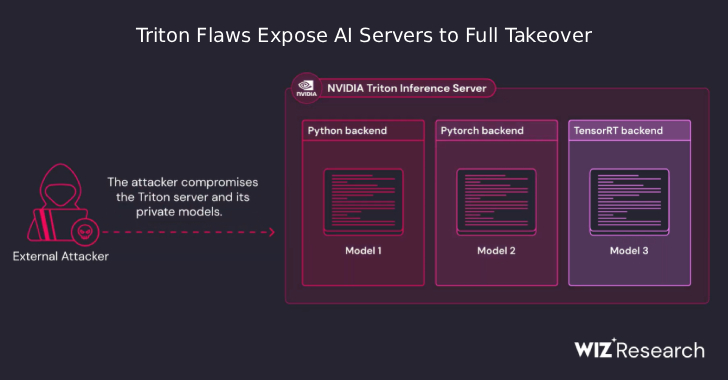
Rising from the Ashes: How Disaster Recovery Programs Shape Tomorrow's Business Landscape
Disasters, both natural and man-made, have the potential to strike at any moment, leaving a trail of destruction in their wake. From earthquakes and hurricanes to cyberattacks and data breaches, the threats to businesses are diverse and ever-evolving. However, in the face of adversity, many companies have discovered the importance of disaster recovery programs. These programs are not just about rebuilding after a catastrophe; they play a pivotal role in shaping tomorrow’s business landscape.
The Changing Face of Disasters
As our world becomes increasingly interconnected and reliant on technology, the nature of disasters has evolved. Traditional natural disasters like earthquakes and floods still pose significant threats to businesses, but the digital realm has introduced new, often more insidious dangers. Cyberattacks, for instance, can cripple a company’s operations within seconds, causing widespread financial and reputational damage.
In recent years, we’ve witnessed the rise of ransomware attacks, where hackers encrypt a company’s data and demand a ransom for its release. These attacks have paralyzed major corporations, hospitals, and even municipal services, underscoring the urgent need for robust disaster recovery plans.
The High Stakes of Data Protection
One of the most critical components of disaster recovery programs is data protection. In today’s data-driven world, businesses rely on vast amounts of information to operate efficiently. Losing this data can be catastrophic.
For instance, consider the healthcare sector. Medical facilities store patient records, treatment plans, and research data digitally. A cyberattack that compromises this data not only disrupts daily operations but also jeopardizes patient care. Disaster recovery programs in healthcare are designed to ensure that critical patient data remains accessible even in the face of a cyber crisis.
Similarly, financial institutions are prime targets for cyberattacks. They safeguard sensitive customer information, transaction records, and regulatory documents. Without robust disaster recovery measures, a successful attack on a bank could lead to financial instability and erode public trust.
The Role of Disaster Recovery Programs
So, what exactly are disaster recovery programs, and how do they shape the business landscape of tomorrow?
- Prevention and Mitigation:
Disaster recovery programs encompass a wide range of strategies and technologies aimed at preventing disasters or minimizing their impact. This includes data encryption, regular system backups, and firewalls to protect against cyberattacks. Moreover, businesses are increasingly investing in predictive analytics and monitoring systems that can alert them to potential threats before they escalate.
- Business Continuity:
When disasters strike, the ability to maintain essential operations is paramount. Disaster recovery programs include comprehensive business continuity plans that outline how a company will function in the event of a disaster. This often involves establishing backup sites, remote work capabilities, and communication strategies to ensure that employees can continue their work, even if the physical office is unavailable.
- Rapid Recovery:
In the aftermath of a disaster, time is of the essence. Disaster recovery programs include detailed procedures for recovering data and systems quickly. This involves not only restoring lost data but also verifying its integrity and ensuring that all systems are secure before resuming normal operations.
- Adaptation and Learning:
Disasters are often opportunities for growth and adaptation. Businesses that have experienced disasters firsthand often emerge stronger and more resilient. Disaster recovery programs incorporate a feedback loop that allows companies to learn from their experiences and refine their strategies continually.
Case Studies in Resilience
To illustrate the real-world impact of disaster recovery programs, let’s explore a couple of notable case studies.
Case Study 1: The NotPetya Attack on Maersk
In June 2017, the shipping giant Maersk fell victim to the NotPetya ransomware attack, which encrypted the company’s data and disrupted its global operations. However, Maersk’s disaster recovery program was a testament to its resilience. The company had maintained robust data backups and was able to restore its systems relatively quickly.
What’s remarkable about this case is how Maersk emerged from the attack stronger than before. The incident served as a catalyst for the company to revamp its cybersecurity measures, investing heavily in enhancing its disaster recovery program. Maersk’s experience underscores the importance of not just recovering from disasters but using them as opportunities for growth and improvement.
Case Study 2: Hurricane Katrina and Hancock Whitney Bank
Hurricane Katrina, one of the deadliest natural disasters in U.S. history, devastated the Gulf Coast in 2005. Among the affected businesses was Hancock Whitney Bank, which lost several branches and saw significant damage to its IT infrastructure.
However, Hancock Whitney Bank’s disaster recovery program had laid the groundwork for a swift recovery. The bank had backup data centers, and its employees were well-trained in disaster response. While the physical destruction was substantial, the bank was able to maintain essential services and, over time, rebuild and expand. The disaster recovery program not only helped the bank survive the catastrophe but also positioned it for growth in the years that followed.
The Future of Disaster Recovery
As we look ahead to the future, disaster recovery programs will continue to evolve to meet new challenges. Here are some emerging trends that will shape tomorrow’s disaster recovery landscape:
- AI and Machine Learning:
Artificial intelligence and machine learning are being increasingly integrated into disaster recovery programs. These technologies can detect anomalies and potential threats in real-time, allowing businesses to respond proactively.
- Cloud-Based Solutions:
Cloud computing offers scalable and cost-effective disaster recovery solutions. Many businesses are moving their critical data and applications to the cloud, where they can be easily backed up and restored.
- Cyber Insurance:
The rising threat of cyberattacks has led to the growth of cyber insurance. This type of insurance can provide financial protection in the event of a cyber disaster, incentivizing businesses to invest in robust disaster recovery programs.
- Regulatory Compliance:
Governments and regulatory bodies are increasingly imposing stringent data protection and disaster recovery requirements on businesses. Compliance with these regulations will become a central concern for many companies.
Conclusion
Disasters, whether natural or digital, are an inevitable part of the modern business landscape. However, how businesses respond to these disasters can determine their survival and future success. Disaster recovery programs are not just about recovery; they are about resilience, adaptation, and growth.
In an era where data is king, protecting it has never been more critical. The stories of Maersk and Hancock Whitney Bank serve as powerful reminders that disaster recovery programs are not just an expense but an investment in a company’s future. As we move forward, businesses must continue to innovate and adapt their disaster recovery strategies to stay ahead of emerging threats and shape a more resilient and prosperous business landscape for tomorrow.
Contact Cyber Defense Advisors to learn more about our Disaster Recovery Program solutions.





